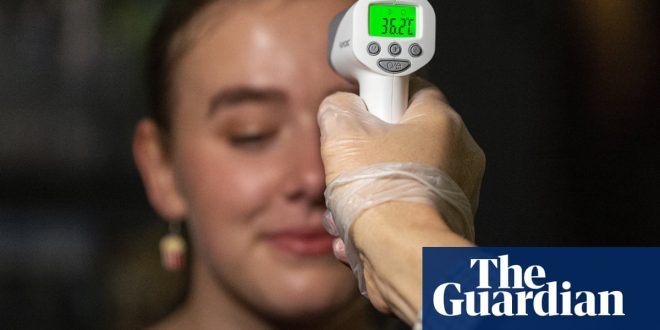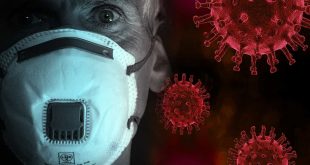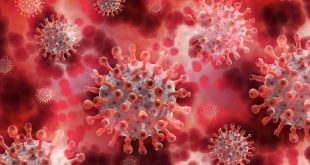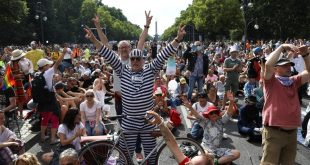More than 1 million Victorians have been advised not to leave their suburbs by a national health committee and the state government is considering making the advice a legally enforceable restriction.
On Sunday the Australian Health Protection Principal Committee advised against travel to and from the Hume, Brimbank, Moreland, Darebin, Cardinia and Casey local government areas surrounding Melbourne, after large outbreaks caused a spike in the state’s Covid-19 cases.
The advice followed the news that Victoria would delay the relaxation of its lockdown laws, tighten the number of guests allowed inside the home to five, and restrict public gatherings to a maximum of 10, for at least three weeks.
But what does this travel recommendation mean for the one in five Victorians who live in these areas?
Here is everything we know so far.
What does the recommendation mean?
The recommendation advises Victorians and interstate travellers from outside these local government areas not to travel into these suburbs. Those who live inside are urged not to leave unless for essential reasons.
The committee did not lay out specific reasons people should be allowed to travel to and from these areas, but simply told people to do so as little as possible.
Jenny Mikakos MP #StayHomeSaveLives
(@JennyMikakos)I live in Darebin, one of the current #COVID19 hotspots. If needed, Stay at Home Directions will be targeted to these hotspot areas. I urge residents in Hume, Brimbank, Casey, Darebin, Moreland & Cardinia to limit their movements as much as possible to stay safe #springst 1/2
Victoria’s health minister, Jenny Mikakos, urged residents inside these suburbs to stay home as much as possible and limit their movements but this is not yet a legal direction.
What is the AHPPC?
The Australian Health Protection Principal Committee is made up of the chief health officers of each state and is chaired by Brendan Murphy, the Australian chief medical officer.
While it can make recommendations, and these undoubtedly carry weight, they are not legally enforceable.
This means it will be up to the Victorian government to decide if it will enforce stay-at-home orders for these suburbs.
Will the Victorian government make this law?
The Victorian government is seriously considering a stay-at-home order if community transmission continues to rise.
On Saturday the premier, Daniel Andrews, floated the idea of suburb-based lockdowns.
“It may be the case in the days ahead … where we have seen the data tells us a very clear story that there are extra cases and the highest number of cases, we may need to, for instance, reinstitute the stay-at-home except for the four reasons,” he said at a press conference.
“We all remember that time, it was deeply frustrating but it was very effective … We may need to go back to that setting in given geographical areas.”
The “four reasons” the premier referred to were the four essential reasons for leaving home during the state’s stage three lockdown: shopping for essential supplies, medical care and caring for others, exercise, and study or work if this could not be done from home.
But a government spokeswoman said the state wasn’t yet at the point of bringing in these orders.
“As the premier mentioned on Saturday, if we keep seeing high case numbers each day, we will have to consider returning whole suburbs back to stay-at-home directions,” she said. “We have not reached that stage yet.”
Why has the AHPPC recommended this?
Victoria has quickly become the most heavily infected state in the country. The AHPPC say that of the newly confirmed cases in the past seven days, 116 – or 83% – were reported in Victoria.
Only a quarter of these are returned travellers in hotel quarantine. The remaining 87 cases are largely associated with community transmission and existing clusters.
The federal deputy chief medical officer Dr Nick Coatsworth said these numbers were confined largely to four or five outbreaks.
“[The number of new cases] remain modest compared to the population of Victoria, 6.4 million … It does demonstrate that there is ongoing community transmission in Victoria, hence the recommendations to defer travel within and out of the local government areas in Melbourne that we made yesterday,” he told ABC News Breakfast on Monday morning.
What do we know about these outbreaks?
The biggest clusters began in Keilor Downs and Coburg. Both of these are extended family outbreaks where the virus is believed to have been transmitted inside private homes.
Together, they make up about 25 cases and are now spread across the local government areas of Hume, Brimbank and Moreland in Melbourne’s west, and Cardinia – a large area in the city’s east.
There has since been a second unconnected family outbreak in Keilor Downs.
Andrews said on Saturday that half Victoria’s cases since the end of April had come from transmission inside someone’s home.
“The experts tell us that, largely, the numbers are being driven by families – families having big get-togethers and not following the advice around distancing and hygiene,” he said.
“You can see how this could happen. People feeling relaxed at home. Letting their guard down. Letting old habits creep back. But we are still in a pandemic – and people’s lives are still at risk.”
So far Melbourne’s outbreaks have led to a number of schools and stores being closed down for deep cleaning, and more than one thousand close contacts being asked to self-isolate. Several aged care homes have also been placed in lockdown after residents tested positive. These include Lifeview Willow Wood in Cranbourne and Royal Freemasons Springtime in Sydenham.
As of Sunday, the breakdown of active cases by local government areas is as follows.
-
City of Melbourne – 23
-
Brimbank – 10
-
Hume – nine
-
Casey – nine
-
Cardinia – six
-
Moreland – five
-
Maribyrnong – five
-
Whittlesea – five
-
Darebin – three
-
Moonee Valley – three
-
Unknown – 11
While the City of Melbourne has the overwhelming majority of cases, these are largely returned travellers securely in hotel quarantine, therefore not at high risk of transmitting the virus further.
But there have been several outbreaks among security guards at quarantine hotels, including the Stamford Plaza Hotel and Rydges Hotel. It’s believed that one of the security guards at the Stamford Plaza is connected to a large family outbreak in Melbourne’s south-east.
Melbourne’s north and west have been the location of several other large outbreaks. The outbreak at the Cedar Meats abattoir in Brooklyn, in the local government area of Brimbank, ballooned to more than 100 cases in May, and the Fawkner McDonald’s outbreak, in the local government area of Moreland, grew to about a dozen cases.
 The Argus Report Read about it!
The Argus Report Read about it!





